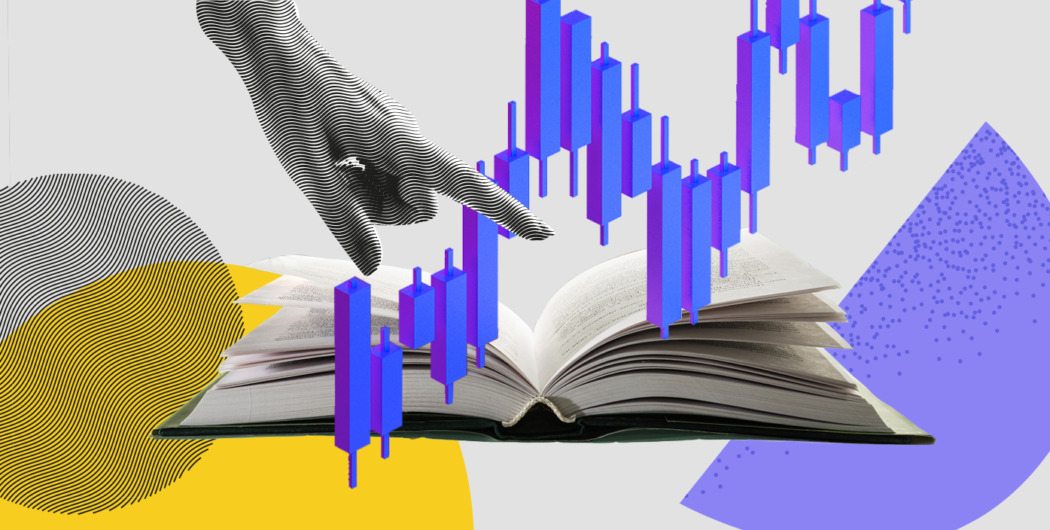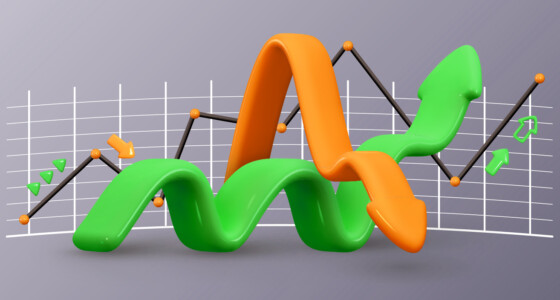

Inspired by the success of legendary investors like Warren Buffet, many people want to try their hand at financial markets. After watching “The Wolf of The Wall Street” (which actually has a Guinness World Record for the most cuss words in a movie — 2.81 times per minute — and 5 Oscar nominations), some people became even more motivated. Not by the part when Belfort’s career comes crashing down, of course; rather, by inspirational clips and important life lessons.
It may seem that you only need to use your brain and have some courage to be rewarded. Well, not entirely so. If you want to start trading now, learn these 9 rules first.
Before you trade
1. Learn the market
The first thing any new trader should focus on is learning as much about their target market as they can. If you haven’t chosen your preferred markets to trade, consider the most popular types of financial markets:
- The stock market, where buyers and sellers exchange equity shares of public companies
- The currency market, or the foreign exchange market, a decentralized worldwide market where currencies are being traded 24/5
- Commodities markets, where market participants trade raw or partly refined materials
All the markets have unique features that you should be aware of. For example:
- Volatility in the stock market comes in waves and depends on political and economic factors, such as elections and unemployment rates.
- If you choose to buy and sell currency, pay attention to the major currencies — US dollar, euro, Japanese yen, British pound, and Swiss franc — that have the highest liquidity. As a newbie, you should be careful with exotic currencies due to their low liquidity.
- If you choose to trade commodities, remember that they include not only physical products but also a variety of derivative contracts, such as spot contracts, forwards, futures, and swap contracts. Just like currencies, different commodities have different levels of liquidity and volatility: oil and gold are highly liquid, while agricultural products suffer from low liquidity. However, even oil and gold have significant differences — the oil market is highly volatile, while gold is considered a safe-haven asset.
2. Learn basics of market analysis
Learn how to evaluate the current market direction and predict future trends with fundamental and technical analysis. The difference is that technical analysis uses historical price data to determine possible future price movement, and fundamental analysis focuses on factors that may affect the intrinsic value of an asset.
3. Practice on a demo account
Whenever you learn a new skill, you need to practice it in a controlled environment. The same goes for trading on a demo account. You will test your technical and fundamental skills and try to adapt to different market conditions without risking your real funds. Use this chance to make mistakes and learn from them.

When you feel confident enough to switch to live trading, build a new set of rules that you must follow no matter what happens during the trading session.
While you trade
4. Always stick to your strategy
Remember what you’ve learned during market analysis and use this knowledge to create a trading strategy. Set your goals and objectives in advance; they should be reasonable and achievable. Determine your profit goals, risk tolerance level, and trade criteria.
Don’t switch strategies or make changes in the middle of the trading session — trust the process. Beginners often start panicking whenever the market moves against them even a tiny bit. Don’t change your decision, though, unless it’s a market crash.
5. Apply risk-reward rules and capital management
Capital management is an important step for protecting your funds. It’s like setting an operating budget as a small business so that you can base your decisions on data and figures rather than emotions.
In trading, capital management involves the use of stop-loss and setting a risk/reward ratio. The risk/reward rules will hold you back from impulsive decisions because you have clear guidelines for the potential returns of a trade and its potential loss. The potential returns should be 2-3 times higher than the potential loss.1/3 is considered the perfect ratio, while others prefer 1/2.
6. Know when to exit the market
You have your strategy and rules, so what can go wrong? In fact, a lot.
If you set risk/reward rules, you probably placed a stop-loss order that will limit your losses and a take-profit order that will ensure the trade will be closed at your desired profit target. Don’t get greedy and change these orders: many traders fall into the trap of holding for too long in the hope of receiving a better reward.

General rules
7. Control your emotions
Sometimes trading feels like riding a rollercoaster. However, as mentioned earlier, your emotions shouldn’t affect your trading decisions.
Did you know that it’s not only trading ups and downs that can affect your decision-making but also your personal experiences? For example, the topic of money is particularly sensitive to some people. From their point of view, even small losses may seem devastating. These kinds of intense feelings can severely impact your trading journey and sway you in the wrong direction.
Take a deep breath and go back to your strategy. This is another reason to always have a solid strategy that will get you through tough periods.
8. Diversify your portfolio
Diversification is a straightforward strategy that allows you to minimize some of the consequences of market instability and volatility that affect your portfolio over time.
Different assets have different characteristics, so it makes sense to include more than one asset class. For example, you can diversify a predominantly stock portfolio with commodities or derivative assets.
A well-diversified portfolio should have assets with a negative correlation to offset some market risks. For example, when oil prices go down, airline stocks go up; the same goes for US dollar vs. gold or US dollar vs. crude oil. Gold prices and stock markets show a negative correlation, too, but not always.
9. Follow the news
The news is a vital source of knowledge that can impact your trading decisions. You should keep up with the news stories that are related to your market of interest. It’s worth tracking other influential markets, too. Read the news about the global economy, financial data, political events, corporate announcements, etc.
And finally, choose your sources wisely. When you’re new to the trading world, it’s easy to be misled.
Final thoughts
As you can see, it takes some effort to prepare for the market and navigate it efficiently. Fortunately, there is plenty of information available online — from the basics to strategies and trading psychology tips. Bear in mind that no one can give you guarantees or make promises, and if they do, they’re not to be trusted.
You’ll also learn a lot from your own trading experience. And then, after you start making successful trades, you should be extremely careful about how you approach trading, no matter how confident you get.






